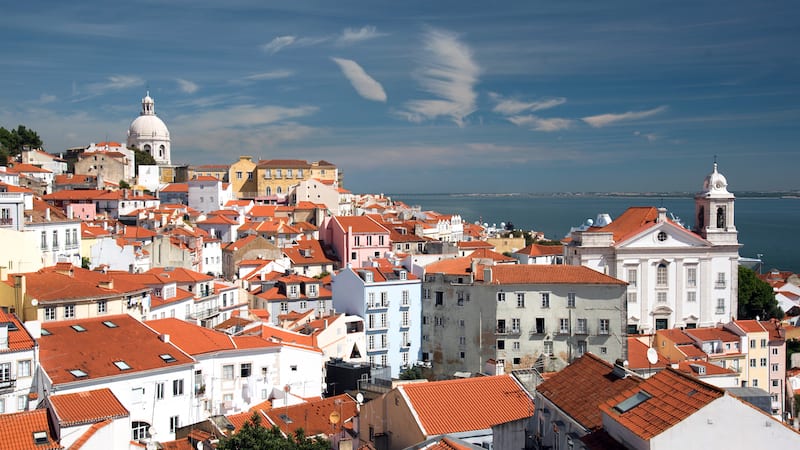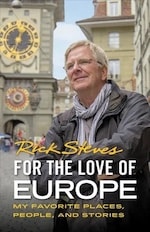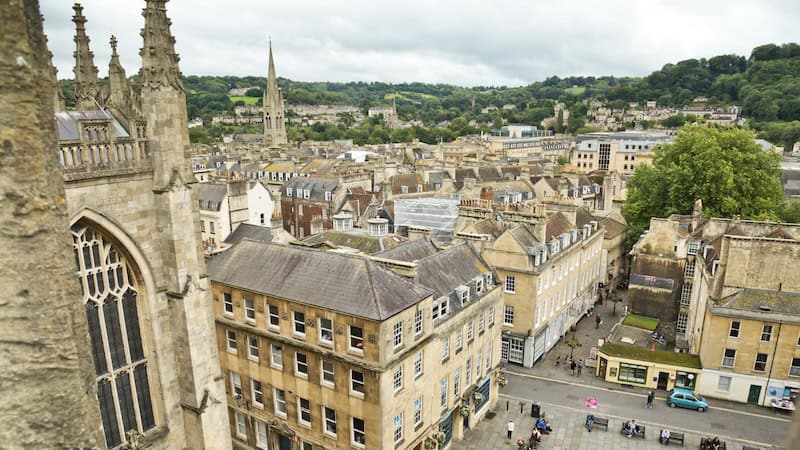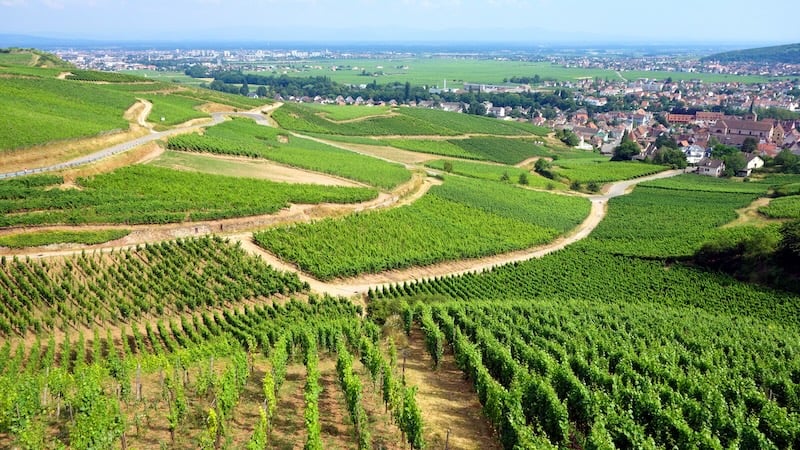Exploring Lisbon in Portugal
An inspiration for travel – and travel writers

Thank inspirational Lisbon for charming sights and stories, and for decades of insights from Rick Steves. The travel writer takes us to San Francisco’s sister – foggy and with a historic earthquake in its past – and to neighborhoods around the city.
If San Francisco had a sister, it would be Lisbon. Both cities have awe-inspiring suspension bridges and famously foggy weather. Both are situated on the best natural harbors on the west coast of their respective continents. Both have trolleys rattling up and down their steep hills past characteristic buildings. And both have survived horrific earthquakes.
In 1755, an estimated 9.0 earthquake leveled two-thirds of Lisbon. Within a month, a new city was designed, and downtown Lisbon was rebuilt on a progressive grid plan, with broad boulevards and square squares. Today, Lisbon is a ramshackle but charming mix of now and then. Bird-stained statues mark grand squares, taxis screech around cobbled corners, and well-worn people hang out in Art Nouveau cafés. And just like it did during the days of Magellan and Vasco da Gama, the city continues to welcome ships to its large port. Even today, Lisbon still feels like Europe’s gateway to the world.
Tumbling down from the castle to the river, the Alfama is Lisbon’s salty sailors’ quarter. Its tangled street plan is one of the few aspects of Lisbon to survive the big quake, making the Alfama a cobbled playground of Old World color. Urban-jungle roads are squeezed into a maze of confusing alleys, designed to frustrate invaders trying to get up to the castle. What was defensive then is atmospheric now. Bent houses comfort each other in their romantic shabbiness. The air drips with laundry and the smell of clams and raw fish.
When I came here in the ’70s, the Alfama was one of the places that charmed me into becoming a travel writer. On my last trip here – 40-something years later – I noticed that much of the neighborhood’s grittiness has been cleaned up. Old fishermen’s families have been replaced by immigrant laborers. Once-characteristic fish stalls have moved off the streets and into “more hygienic” covered shops. Widows no longer wear black after their husbands die. But despite modernization, the Alfama remains one of the most photogenic neighborhoods in all of Europe.
About five miles from downtown, Belém is a stately pincushion of important sights reminding visitors of the days when Portugal was Europe’s richest power. Following the quake, Portugal’s rattled royalty chose to live out here, in wooden rather than stone buildings. The royal stables and a large, newer hall nearby house the National Coach Museum, displaying 70 dazzling carriages chronologically and tracing their technological improvements. The oldest coach dates back to 1600 and was used by King Philip II to shuttle between Madrid and Lisbon. You’ll have to trust me on this, but if you lift up the seat cushion, you’ll find a potty hole – also handy for road sickness.
Nearby, the Monastery of Jerónimos houses Lisbon’s most impressive church. This is where seafarers such as Vasco da Gama prayed before embarking on their voyages. The church is one of my favorite examples of Manueline architecture, an ornate, uniquely Portuguese style featuring an airy interior, slender palm-tree-like columns, and motifs from the sea, including shells, artichokes (eaten for vitamin C to fight scurvy), and monsters representing the mystery of undiscovered lands.
Across the street, the gleaming Monument to the Discoveries celebrates Prince Henry the Navigator and offers great views of Lisbon and the Tejo River. Before leaving Belém, try a tasty pastel de Belém, a wonderful cream tart invented in this neighborhood.
The more modern-feeling Baixa is the rebuilt center of Lisbon. This flat shopping area features grid-patterned streets and utilitarian architecture (buildings are uniform, with the same number of floors and similar façades). The Baixa’s pedestrian streets, inviting cafés, bustling shops, and elegant old storefronts give the district a certain magnetism. I find myself doing laps up and down the pedestrians-only main boulevard in a people-watching stupor.
The neighborhood is also home to the oldest ginjinha joint in town. Served in shot glasses, this popular drink is made from the sour-cherry-like ginja berry, sugar, and grappa. (When locals are impressed by the taste of something, they say, “Sabe que nem ginjas” – “It tastes like ginja”). A shot of ginjinha is especially nice if you ask for it gelada (poured from a chilled bottle).
Whenever I go to a bar in Lisbon, my go-to snack is pastel de bacalhau, a fried potato-and-cod croquette. Bacalhau (salted cod) is Portugal’s national dish. Imported from Norway, it’s never fresh, and local kids think it’s a triangular fish because of the way it’s sold. I think that Portugal must have the only national dish that’s imported from far away – strange, and yet befitting a culture whose centuries-old economic foundation was the result of great explorers.
PHOTO CAPTION, ABOVE: View from Largo Santa Luzia Miradouro Santa Luzia. Breathtaking views are bountiful in this city of red-tiled roofs on the yawning mouth of the Tejo River. CREDIT: Rick Steves.
 Rick Steves (www.ricksteves.com) writes European guidebooks, hosts travel shows on public TV and radio, and organizes European tours. This column revisits some of Rick’s favorite places over the past two decades. Read more European adventures in For the Love of Europe. Other books include numerous destination-specific travel guides, including Rick Steves Portugal. You can email Rick at rick@ricksteves.com and follow his blog on Facebook.
Rick Steves (www.ricksteves.com) writes European guidebooks, hosts travel shows on public TV and radio, and organizes European tours. This column revisits some of Rick’s favorite places over the past two decades. Read more European adventures in For the Love of Europe. Other books include numerous destination-specific travel guides, including Rick Steves Portugal. You can email Rick at rick@ricksteves.com and follow his blog on Facebook.
Explore more of Rick Steves’ Europe in Boomer
©2024 RICK STEVES



